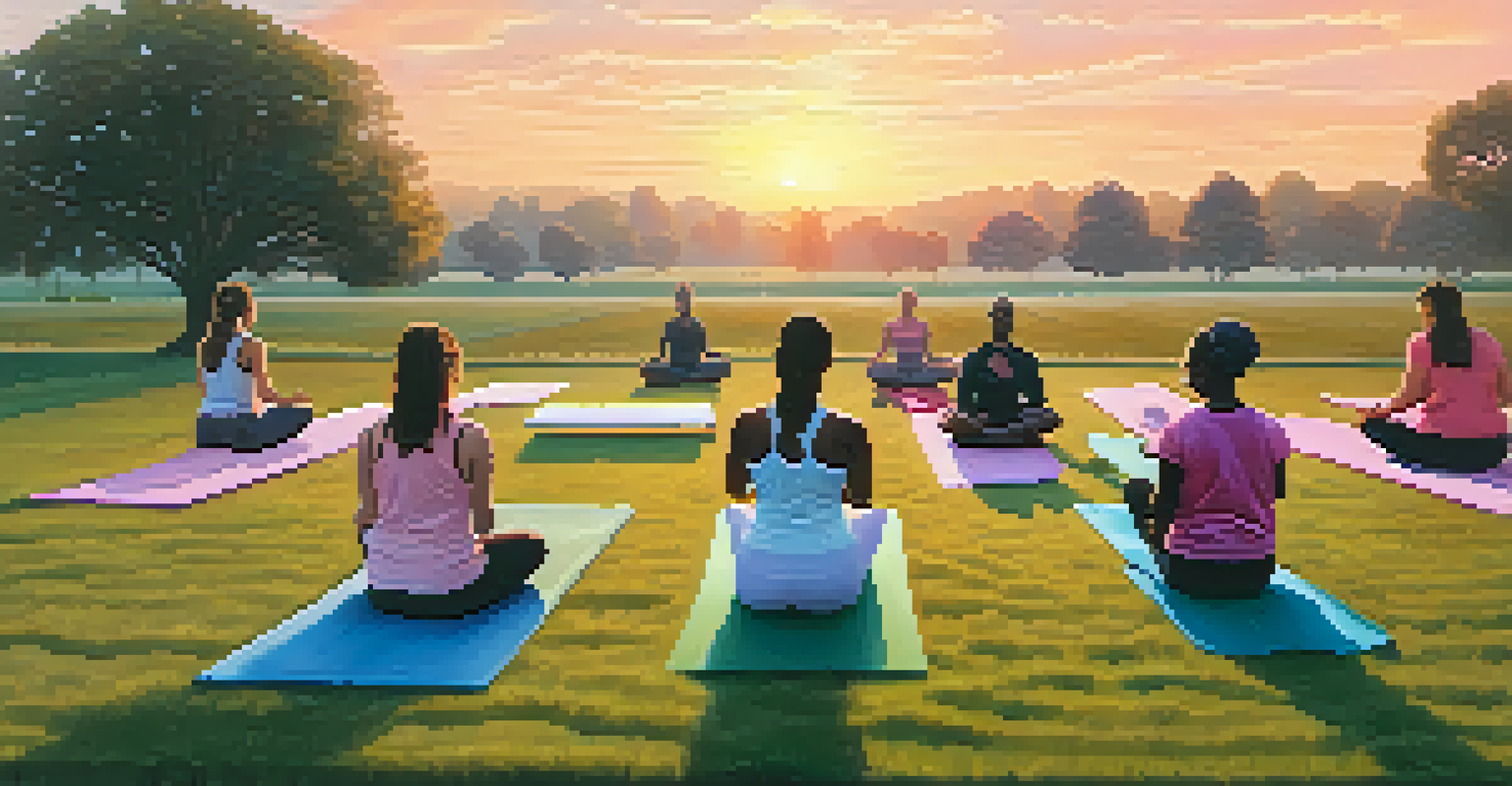Influence of Ancient Indian Texts on Modern Yoga Practices

Understanding the Roots of Yoga in Ancient Texts
Yoga is not just a physical practice; it's deeply rooted in ancient Indian philosophy. Texts like the Vedas and Upanishads lay the groundwork for what we now recognize as yoga. These scriptures delve into concepts of consciousness, self-realization, and the interconnectedness of all beings.
Yoga is the journey of the self, through the self, to the self.
The Yoga Sutras of Patanjali, written around 400 CE, further codify these ideas, outlining the eight limbs of yoga, or 'Ashtanga.' Each limb serves as a guideline to lead practitioners from ethical living to ultimate spiritual liberation. This holistic approach is why yoga remains relevant in modern times.
In essence, ancient texts provide a framework that transcends mere physical postures. They invite practitioners to explore deeper dimensions of themselves, fostering a connection between mind, body, and spirit that is still vital in today’s practice.
The Role of the Bhagavad Gita in Modern Yoga
The Bhagavad Gita is often regarded as one of the most important texts in yoga philosophy. It addresses the inner struggles of life and the path to self-discovery through yoga. By discussing concepts like dharma (duty) and devotion, it provides a moral compass for practitioners.

Many modern yoga practices incorporate the Gita's teachings, emphasizing mindfulness and self-awareness. For instance, the idea of 'Karma Yoga' teaches that selfless action can lead to spiritual growth, a principle that resonates deeply in contemporary yoga classes.
Yoga's Ancient Philosophical Roots
Yoga is deeply rooted in ancient Indian texts that emphasize self-realization and interconnectedness.
Ultimately, the Gita encourages practitioners to find their unique path. This adaptability is what makes its teachings applicable for everyone, regardless of their background or personal journey.
Hatha Yoga’s Evolution from Ancient to Modern
Hatha Yoga, known for its focus on physical postures, has its origins in ancient texts that date back to the 11th century. The Hatha Yoga Pradipika is one such manual that outlines various asanas (postures) and pranayama (breath control) techniques. These foundational practices are still central to many modern yoga classes.
The body is your temple. Keep it pure and clean for the soul to reside in.
In today’s world, Hatha Yoga serves as a gateway for many individuals into the broader practice of yoga. While the historical intention was to prepare the body for meditation, many practitioners now appreciate its physical benefits, such as improved flexibility and strength.
This evolution reflects how ancient practices can adapt to meet contemporary needs. While the essence remains intact, the way Hatha Yoga is taught has transformed, making it accessible and appealing to a diverse audience.
Yoga Philosophy: From Texts to Practice
At the core of yoga is a rich philosophical framework that goes beyond physical activity. Ancient texts encourage practitioners to cultivate virtues like compassion, non-violence, and truthfulness. This philosophical foundation is increasingly important in today’s fast-paced world.
Modern yoga classes often incorporate discussions around these principles, creating a more holistic experience. For example, the practice of Ahimsa, or non-violence, is not just about physical actions but also how we speak and think about ourselves and others.
Adaptability of Yoga Practices
Modern yoga practices have evolved from ancient traditions, maintaining core principles while appealing to diverse audiences.
By integrating these philosophical teachings into practice, yoga becomes a tool for personal growth and social awareness. This connection between ancient wisdom and modern life is what keeps yoga vibrant and relevant.
Meditation Techniques Rooted in Ancient Practices
Meditation is an integral part of yoga, with techniques that trace back to ancient Indian traditions. Practices like mindfulness and concentration are discussed in texts such as the Upanishads, highlighting the importance of inner stillness and self-reflection. These age-old techniques have found a renewed interest in today's wellness culture.
In modern yoga classes, meditation often complements physical practice, helping to deepen the overall experience. Many instructors blend ancient methods with contemporary approaches, making them accessible to practitioners of all levels.
As a result, meditation not only enhances yoga practice but also serves as a vital tool for stress reduction and emotional well-being. The timelessness of these techniques illustrates the enduring influence of ancient wisdom on our modern lives.
The Influence of Tantra on Contemporary Yoga
Tantra, often misunderstood, plays a significant role in shaping modern yoga practices. Ancient texts such as the Tantras explore the relationship between the physical and spiritual realms, emphasizing the importance of energy flow within the body. This understanding enhances many contemporary yoga styles.
Today, practices that incorporate elements of Tantra focus on harnessing energy through movement, breath, and intention. This holistic approach can lead to increased self-awareness and spiritual connection, making it appealing for those looking to deepen their practice.
Meditation Enhances Yoga Experience
Meditation techniques rooted in ancient practices enrich the yoga experience, promoting stress reduction and self-awareness.
Ultimately, Tantra reminds us that yoga is not just about physical fitness but also about experiencing life more fully. Its principles encourage practitioners to embrace all aspects of existence, fostering a richer understanding of themselves.
The Globalization of Yoga and Its Roots
As yoga has spread across the globe, it has transformed and adapted to various cultures. However, the foundational teachings from ancient Indian texts continue to influence modern interpretations. This blend of cultures creates a rich tapestry that honors traditional practices while embracing innovation.
Many contemporary yoga styles, such as Power Yoga and Vinyasa, may seem far removed from their ancient roots, yet they still embody the core principles of self-awareness and mindfulness. This adaptability is part of yoga's charm, allowing it to resonate with diverse audiences.

In this global landscape, the challenge remains to respect and preserve the integrity of yoga's origins while embracing its evolution. By understanding its roots, practitioners can appreciate the depth and richness of their practice, creating a more meaningful connection.